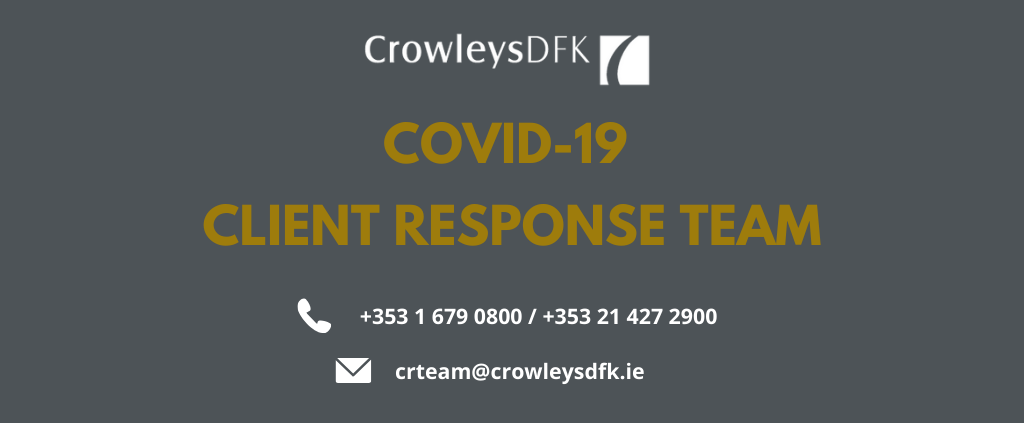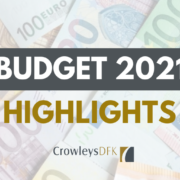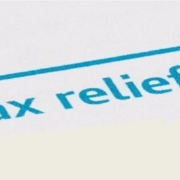Are you ready for the VAT rate change?
One of the key measures from the Government’s July Stimulus Package is the temporary reduction in the standard rate of Irish VAT for a six-month period. Between 1 September 2020 and 28 February 2021, the standard rate of VAT will change from 23% to 21%.
The standard rate of VAT applies to a wide range of goods and services e.g. the sale of motor vehicles, adult clothing, alcohol, electrical goods, most household goods, non-basic foods stuffs, many e-services, professional services and telecommunications.
The VAT rate change will not impact the VAT treatment of supplies which qualify for the reduced rate of VAT which remains at 13.5%. This includes tourism-related activities including restaurants, hotels, cinemas, and hairdressing as well as cleaning and maintenance services.
Businesses will need to consider the impact on their business and updates to their systems to account for the new rate of VAT.
| Systems: | Systems will have to be updated and tested for the new VAT rate change. Depending on the particular systems, this may either be a simple task or may involve some work.
Many businesses may already have had a 21% VAT code on their systems from prior years – however, they will need to check whether this code continues to function correctly and can the changes be easily reversed when the rate reverts back again? |
|
| Pricing: | Businesses need to consider whether they should amend the pricing of goods and services as a result of the temporary VAT rate change.
This is particularly relevant for businesses who set their prices on a VAT-inclusive basis such as retailers or suppliers to businesses with limited VAT recovery. They should also consider how this will impact budgets heading into the last quarter of 2020. |
|
| Contracts: | Businesses should review existing contracts and consider whether the price is VAT-exclusive or VAT-inclusive. Do you need to engage with any of your suppliers or customers in respect of the VAT rate change? | |
| Invoices: | On or after 1 September 2020, VAT invoices issued by a VAT registered person who is not on the cash receipts basis to a VAT registered person, a public body or, a business carrying on a VAT exempt activity should show VAT at the new 21% rate. This is so even if the goods or services were supplied before this date.
A VAT registered person on the cash receipts basis should who is required to issue a VAT invoice to another VAT registered person, should show the VAT rate which applies on the date of the supply, not on the date of receipt of payment. If the date of supply is prior to 1 September 2020, then the VAT rate is 23%. |
|
| Reverse Charge VAT: | For businesses with partial VAT recovery entitlement, VAT at 23% must be accounted for on the reverse charge basis on taxable foreign purchase invoices dated on or before 31 August, even if those invoices are not received until September 2020. | |
| Credit or Debit Notes: | Any credit notes or debit notes issued on or after 1 September 2020 in respect of supplies of goods or services made to a VAT-registered person, a public body or a business carrying on a VAT exempt activity prior to this date must show the VAT rate in force at the time the original invoice was issued, i.e., 23%. | |
| Advance Payments: | If the goods or services are supplied on or after 1 September 2020 businesses who account for VAT on an invoice basis: the appropriate VAT rate is the rate in force at the time the invoice relating to the advance payment is issued, or ought to have been issued, whichever is the earlier.
Businesses who account for VAT on a cash receipts basis: the appropriate VAT rate is the rate in force at the time of the advance payment. An advance payment received from an unregistered person is subject to VAT by reference to the rate in force at the time of the advance payment. |
|
Crowleys DFK are here to help you in these unprecedented times. We are at the other end of telephone (+353 1 679 0800/+353 21 427 2900) or on our dedicated COVID-19 Client Response Team email: crteam@crowleysdfk.ie when you need us.








